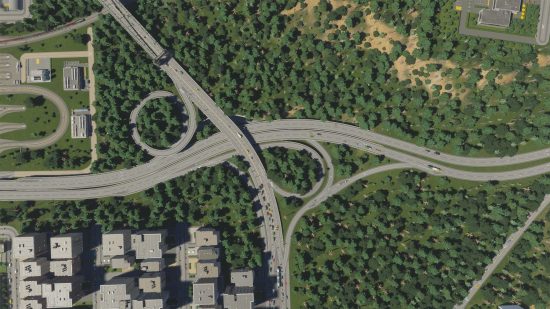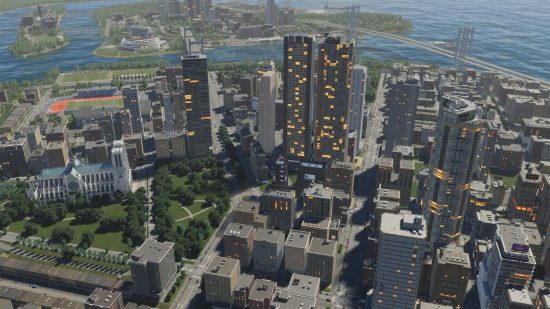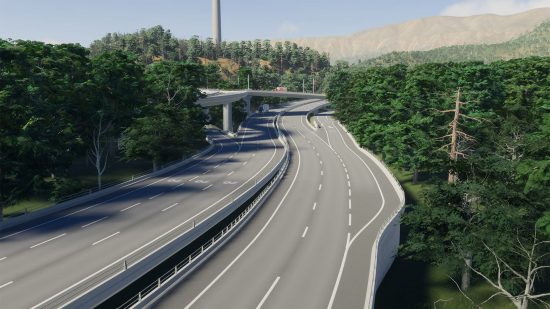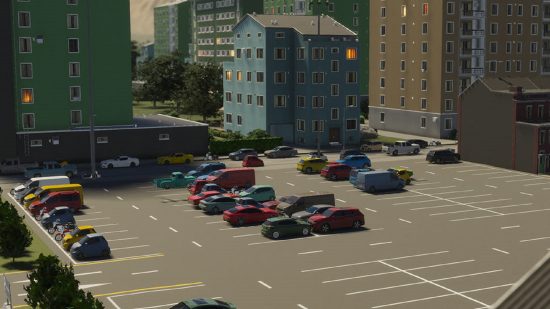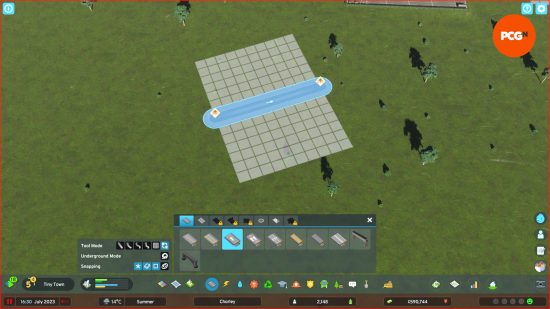What is the best way to build a Cities Skylines 2 road? A burgeoning metropolis needs a lot of things in place in order to thrive. Your citizens need housing, they need jobs, healthcare, water, and electricity, the list is pretty large, and in your job as omnipotent overseer, you’ll have to balance these to keep happiness as high as you can. There is perhaps one undervalued aspect of city building, though, and that is the placement and management of your road system.
The Cities Skylines 2 release date is here, finally, with players scratching their heads about the new road features (ahem, Cities Skylines 2 roundabouts solve nearly everything) and how they can efficiently lay out their new settlements. Our Cities Skylines 2 review goes into some detail about the improvements Paradox has made over the previous game, but there is one area specifically that has received a lot of love. Here’s how to build an efficient road system in Cities Skylines 2 so your metropolis runs like clockwork.
Cities Skylines 2 road building tips
Your roads are the things that transport the majority of your population, your water, waste, and anything else on four wheels. Without them, your city will be at a standstill, unable to function, so it’s vital that you put some advanced thought into your road placement and are able to pinpoint problem areas fast.
Here are some tips on how to build and maintain roads in Cities Skylines 2:
Know your roads
The first step in laying an efficient road system is to know the tools you have to hand. The four different road types in Cities Skylines 2 are:
- Small Roads
- Medium Roads
- Large Roads
- Highways
The general idea is that each road can hold a different volume of Cities Skylines 2 traffic, with small roads holding the lowest and highways capable of handling the largest. Knowing the busiest part of your city is vital, as that will need the largest roads – just be aware that you cannot build off the side of a highway, so utilize large roads if your citizens need access to the surrounding buildings.
On the flip side, large roads can cause a lot of noise pollution and potentially be unsafe to pedestrians due to the sheer traffic. For your quieter, more suburban areas, small and medium roads are the best option.
Build grids and parallels
One of the most efficient (and aesthetically pleasing) layouts for a busy city is the grid. Thankfully, in Cities Skylines 2, you don’t have to faff around trying to measure out the perfect grid, as there is now an option to create a grid with a few clicks. Grid mode allows you to create a perfect road pattern instantly, with the advantage of this being that any zone you create inside will have 360-degree access to roads, with none of them being especially busy.
As well as the new grid mode, Cities Skylines 2 introduces the ability to create parallel roads, so you can create multiple roads at the same time, changing them to one-way routes once the foundations are set. One-way highways can deal with an incredible amount of traffic and allow you to control the flow of traffic with greater precision.
That’s your (parking) lot
Vehicles need a place to go when they aren’t being driven. While your more rural residents may have their own garages and on-street parking, when it comes to the high-density buildings, finding a spot for their car can become an issue and can, in turn, crowd your streets.
Build Cities Skylines parking lots in the busiest parts of your city so people have a place to park their cars. With enough secure parking spaces, you can widen your roads, lessening the on-street parking but increasing the traffic your roads can handle. This can be vital in creating more of a flow where space is at a premium.
Maintain your roads
It’s all well and good having an amazing road system, but if it falls into disrepair, you will find that the traffic flow of your city suffers, and the roads themselves can become a hazard for your citizens. The Road Maintenance Depot deploys a small fleet of vehicles that repairs any wear and tear that accumulates on your roads and also keeps them free of snow in the wintertime.
How to change Cities Skylines 2 road directions
If you are using one-way roads, there is a quick and easy way to change the direction of travel without spending extra cash to bulldoze and remake the road.
Here is how you can change your road direction in Cities Skylines 2:
- Click the replace tool in the Tool Mode section (it’s the icon with two squares and two arrows).
- Hold the left click and drag the mouse over the road you wish to replace in the opposite direction of travel to your current road position.
- Let go of the left mouse button to implement the change.
Now you know how to build the perfect Cities Skylines 2 road system, it’s time to put it to the test. Knowing your Cities Skylines 2 map is important and will aid you in predicting where the highest density of traffic will be and, therefore, the largest roads. If you’re looking to add a different flavor to your city, check out the Cities Skylines 2 DLC we can expect and how Cities Skylines 2 mods will work post-Steam Workshop.
